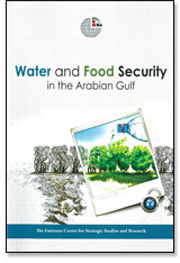Book contents
- Frontmatter
- Contents
- Figures and Tables
- Abbreviations and Acronyms
- Foreword
- Introduction
- Keynote Addresses
- Water Security in a Changing World
- Water Security in the Arabian Gulf Region
- Water Resource Management in the Arabian Gulf Region
- Regional and International Food Security
- 7 Challenges Facing Global Food Supplies
- 8 Food Security Strategies in the Arabian Gulf Region
- Water and Food Security in the UAE
- Contributors
- Notes
- Bibliography
- Index
8 - Food Security Strategies in the Arabian Gulf Region
from Regional and International Food Security
Published online by Cambridge University Press: 05 September 2014
- Frontmatter
- Contents
- Figures and Tables
- Abbreviations and Acronyms
- Foreword
- Introduction
- Keynote Addresses
- Water Security in a Changing World
- Water Security in the Arabian Gulf Region
- Water Resource Management in the Arabian Gulf Region
- Regional and International Food Security
- 7 Challenges Facing Global Food Supplies
- 8 Food Security Strategies in the Arabian Gulf Region
- Water and Food Security in the UAE
- Contributors
- Notes
- Bibliography
- Index
Summary
Arab Gulf countries are heavily dependent on food imports. This dependency is expected to continue to rise as a result of rapidly growing populations, improving living conditions, sustained economic/industrial development and depleting natural resources. Moreover, climate change is expected to have a major effect on the region.
To meet their food needs, Gulf countries must rely on international markets, which makes them vulnerable to the vagaries of global food production, trade policies and commodity prices. This is exemplified by the food crisis of 2007/2008, which led Arab Gulf countries to adopt strategies that include building up national strategic food reserves, scaling up subsidies, and acquiring land abroad for agricultural investments through bilateral deals. These measures may have some drawbacks in the longer term; e.g., prices remaining volatile, socio-economic disturbances impacting land deals, trade being affected by international events or conflicts, etc. What is needed is perhaps a multi-pronged food security strategy that builds on elements of the above measures while integrating them in a GCC-wide approach. The analysis contained in this paper leads into a number of promising strategic directions including: (i) assessing the pros and cons of building a regional food reserve to reduce the risk of market disruptions; (ii) investigating challenges and opportunities for a region-wide procurement system based on innovative financial instruments; (iii) consolidating agricultural R&D systems and enhancing their impact; and (iv) achieving more efficient water use through assessing water footprint of production, consumption, and trade patterns.
- Type
- Chapter
- Information
- Water and Food Security in the Arabian Gulf , pp. 175 - 222Publisher: Emirates Center for Strategic Studies and ResearchPrint publication year: 2013



